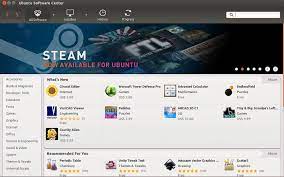How to Install RPM Packages on CentOS: A Comprehensive Guide
Installing RPM Packages on CentOS
CentOS is a popular Linux distribution known for its stability and reliability. One of the ways to install software on CentOS is by using RPM packages. RPM (Red Hat Package Manager) packages are pre-compiled software packages that can be easily installed on CentOS.
Using YUM to Install RPM Packages
YUM (Yellowdog Updater Modified) is a package manager that simplifies the process of installing, updating, and removing software packages on CentOS. To install an RPM package using YUM, you can use the following command:
yum install <package_name.rpm>
This command will automatically resolve dependencies and install the specified RPM package along with any required dependencies.
Manually Installing RPM Packages
If you have an RPM package file that you want to install manually, you can use the following command:
rpm -ivh <package_name.rpm>
This command will install the specified RPM package on your CentOS system. The options used in the command are as follows:
- -i: Install the package
- -v: Verbose output (displays detailed information during installation)
- -h: Print hash marks as the package archive is unpacked
You can also use the following command to upgrade an existing package with a newer version:
rpm -Uvh <package_name.rpm>
Conclusion
Using RPM packages to install software on CentOS is a straightforward process that allows you to quickly add new applications and tools to your system. Whether you choose to use YUM for automated installations or prefer manual installation with rpm commands, installing RPM packages on CentOS gives you access to a wide range of software options tailored to your needs.
9 Common Questions About Installing RPM Packages on CentOS
- How do I install an RPM package on CentOS?
- What is YUM in CentOS?
- Can I use YUM to install RPM packages?
- Yes, you can use YUM to install RPM packages by running the ‘yum install
‘ command. - How do I resolve dependencies when installing RPM packages on CentOS?
- What are the options used in the ‘rpm -ivh’ command for manual installation of RPM packages?
- How can I upgrade an existing package with a newer version using rpm commands?
- Is it possible to uninstall an installed RPM package on CentOS?
- Yes, you can uninstall an installed RPM package on CentOS using the ‘rpm -e
‘ command.
How do I install an RPM package on CentOS?
Installing an RPM package on CentOS is a common task for users looking to add new software to their system. To install an RPM package on CentOS, you can use the YUM package manager by running the command ‘yum install
What is YUM in CentOS?
YUM (Yellowdog Updater Modified) is a package management tool used in CentOS to simplify the process of installing, updating, and removing software packages. It automates the handling of dependencies, making it easier for users to manage software on their CentOS systems. YUM provides a convenient way to search for and install packages from repositories, ensuring that software installations are efficient and hassle-free. Its user-friendly interface and robust functionality have made it a popular choice among CentOS users for managing their software packages effectively.
Can I use YUM to install RPM packages?
Yes, you can use YUM (Yellowdog Updater Modified) to install RPM packages on CentOS. YUM is a powerful package manager that simplifies the process of managing software installations, updates, and removals on CentOS systems. By using the ‘yum install’ command followed by the name of the RPM package, YUM will automatically handle dependencies and install the specified package along with any required dependencies. This makes installing RPM packages using YUM a convenient and efficient way to add new software to your CentOS system while ensuring that all necessary components are properly installed.
Yes, you can use YUM to install RPM packages by running the ‘yum install ‘ command.
Certainly! Here is a paragraph about the frequently asked question on CentOS install RPM:
“Yes, you can easily install RPM packages on CentOS using YUM by executing the ‘yum install
How do I resolve dependencies when installing RPM packages on CentOS?
When installing RPM packages on CentOS, resolving dependencies is a common concern. To address this issue, users can leverage package managers like YUM, which automatically handle dependency resolution during the installation process. By using the ‘yum install
What are the options used in the ‘rpm -ivh’ command for manual installation of RPM packages?
When manually installing RPM packages on CentOS using the ‘rpm -ivh’ command, several options can be utilised to customise the installation process. The ‘-i’ option signifies the installation of the package, while ‘-v’ enables verbose output, providing detailed information during the installation. Additionally, the ‘-h’ option prints hash marks as the package archive is unpacked, offering a visual representation of progress. These options allow users to monitor and control the installation process effectively, ensuring a successful deployment of RPM packages on their CentOS system.
How can I upgrade an existing package with a newer version using rpm commands?
To upgrade an existing package with a newer version using rpm commands on CentOS, you can use the following command: “rpm -Uvh
Is it possible to uninstall an installed RPM package on CentOS?
Yes, it is possible to uninstall an installed RPM package on CentOS. To remove an RPM package from your CentOS system, you can use the following command:
“`bash
rpm -e
“`
Replace `
Yes, you can uninstall an installed RPM package on CentOS using the ‘rpm -e ‘ command.
Yes, you can easily uninstall an installed RPM package on CentOS by using the ‘rpm -e




